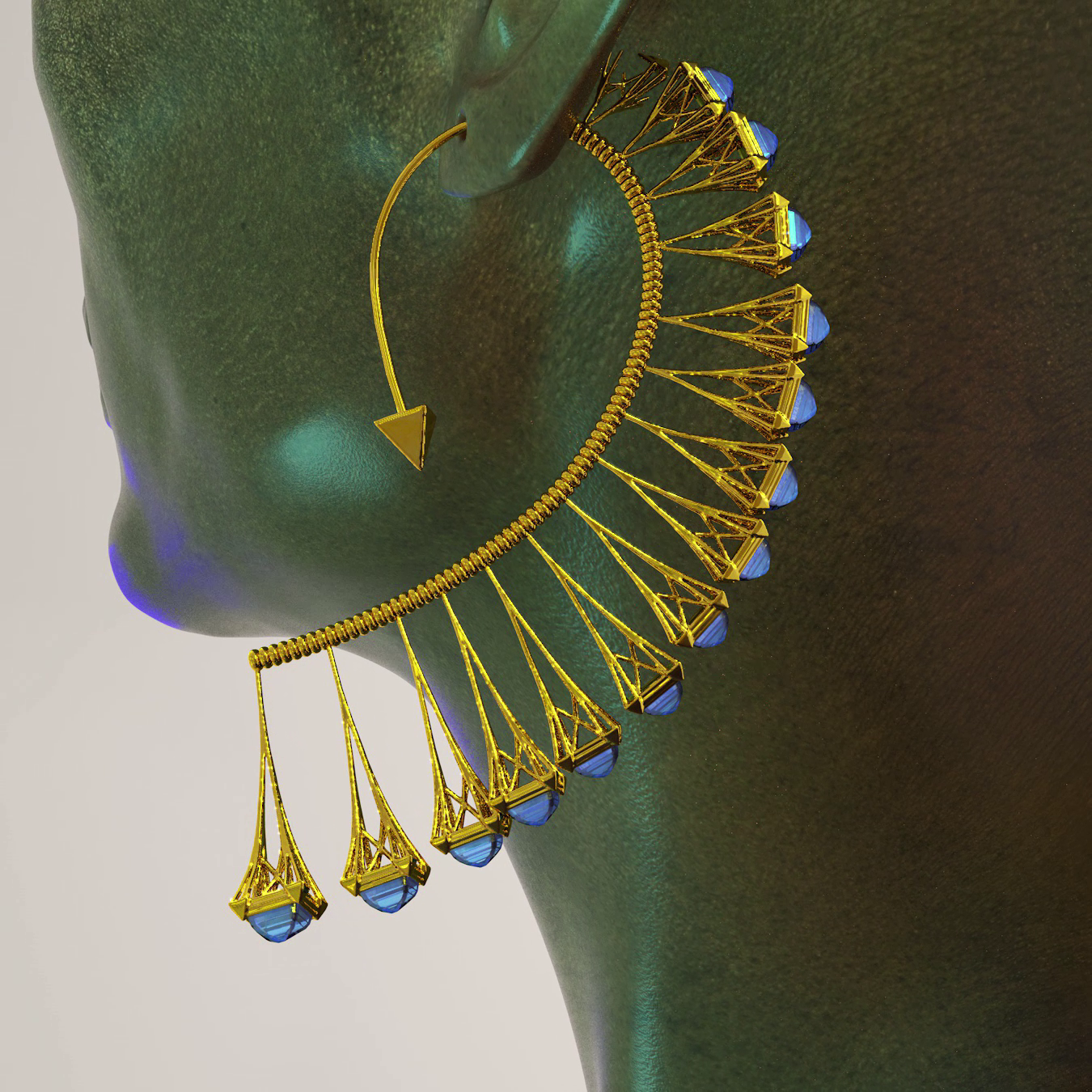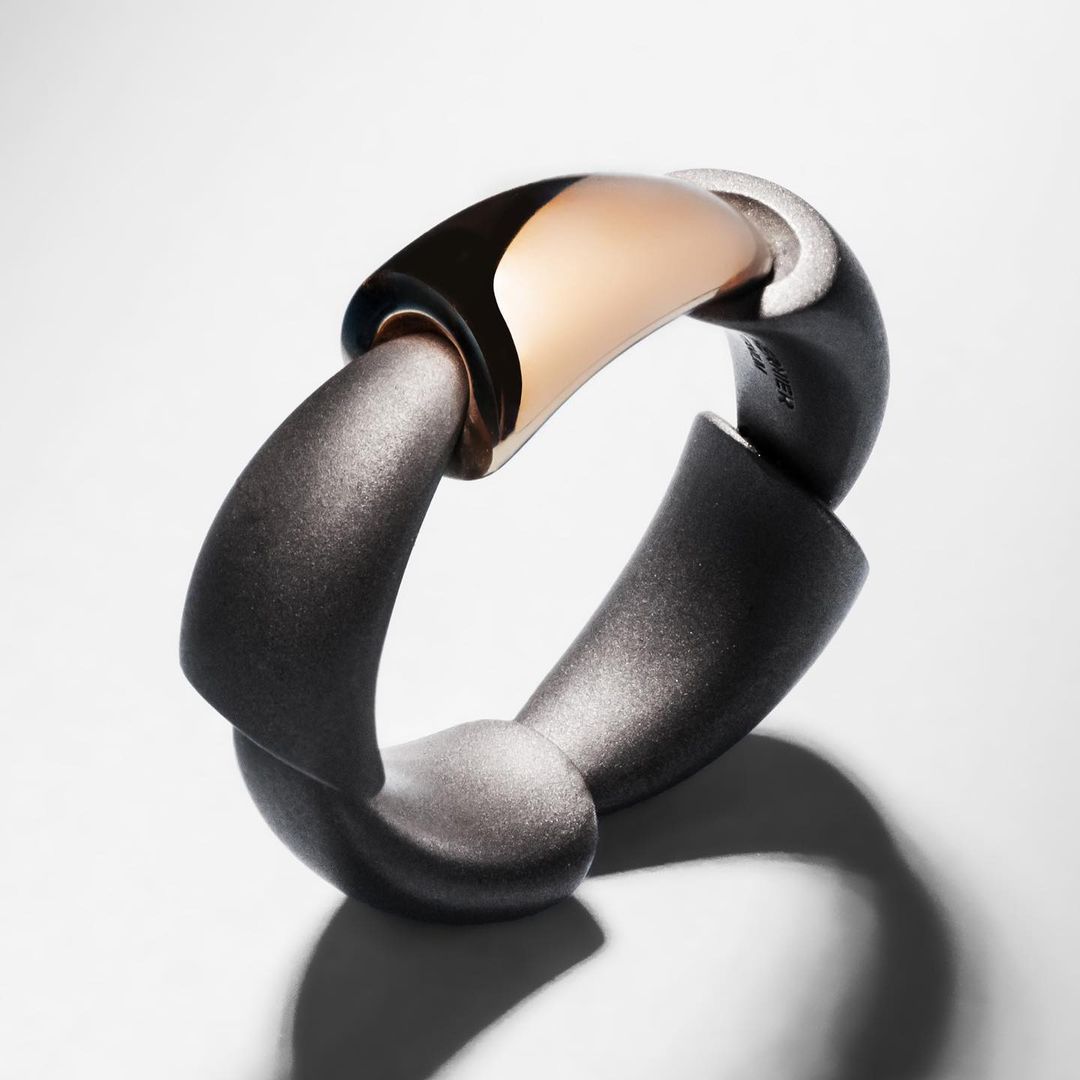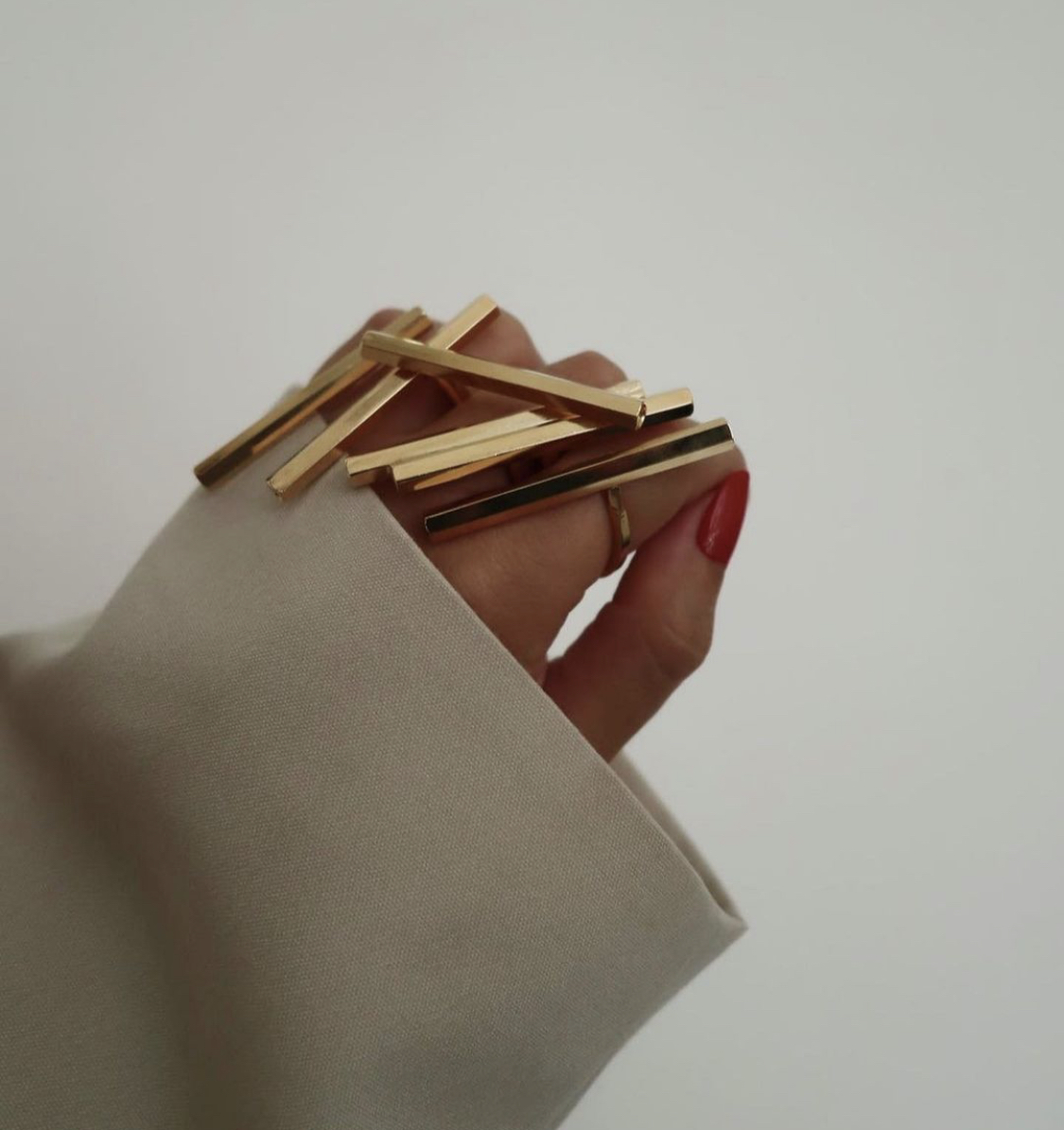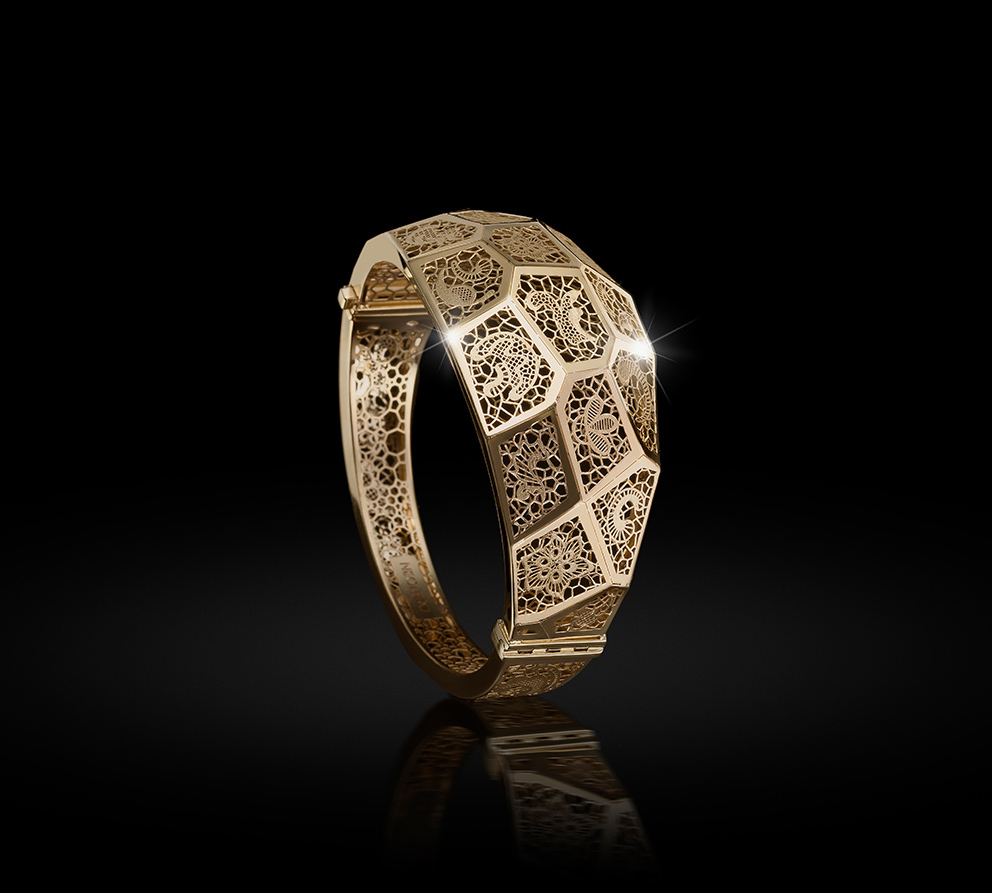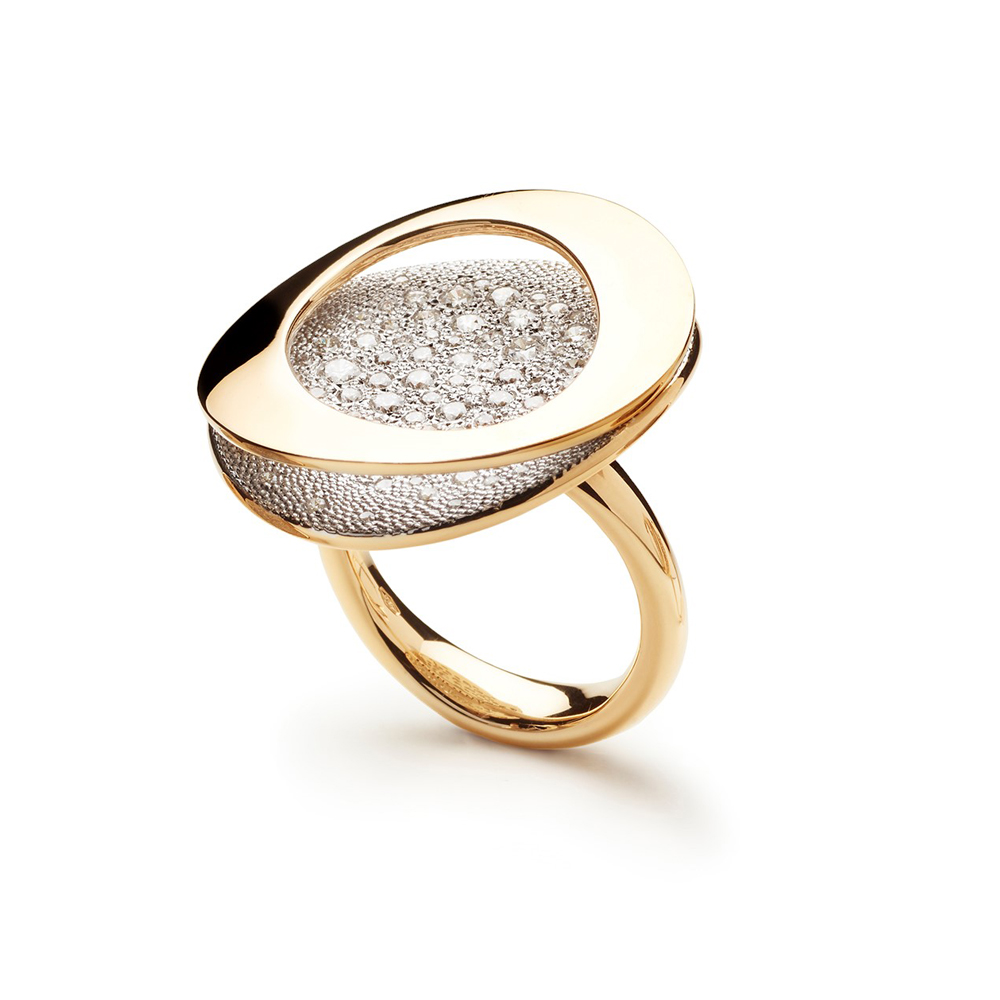Jewelry design and architecture share many similarities in terms of form, function and aesthetics. They both involve creating three-dimensional objects that are meant to be worn or experienced in physical space, while relying on the principles of balance, proportion, and harmony to create visually pleasing compositions. From the popular geometric design and machine age shapes of the Art Deco period, and its revival in the 1960s and 70s, a new design language has emerged today. It is both innovative and technically advanced. Challenging conventions and immersing themselves with radical ideas about the digital future, trail-blazing technologies and non-precious materials are harnessed to overthrow the status quo. Design directions show an eclectic range, from linear and architectural shapes to organic and morphing silhouettes, pushing the boundaries of what is possible in jewelry design, and creating pieces that are not only beautiful, but also functional and structurally sound.
The intersection of architecture and jewelry design has resulted in artistic engagement, where each discipline informs and enriches the other. Peruffo, Antonini Milano, Vhernier and Chantecler are just a few Italian designers that bring a complex urban sensibility into traditional craftsmanship. For these designers, jewelry is an open field where goldsmithing techniques, contemporary art and architecture mutually influence each other.
The advent of 3D printing technology, nanotechnology, digital programmes and laser printing, are giving rise to highly complex geometries, algorithmic designs in repetitive and illusionary patterns. Neonero combines know-how with the most sophisticated technologies and expert artisanal care.
The creations espouse an abstract, minimalist language of clean lines and elemental forms rendered in faceted surfaces and negative spaces that skim the contours of the body, like Invaerso by Clelia Scuteri.
A celebration of geometry in its purest form, designs embrace a succession of clean lines, repetitive patterns, symmetrical arrangements and balanced forms.
The diversification of materials and construction techniques has given rise to a deep understanding of how materials behave and can be manipulated to achieve specific effects. Designers explore different finishes: from polished black rhodium, carbon fibre, titanium to gold, rose gold, aluminium and scratched silver plating. Combining dramatic architectural features with the intrinsic weightlessness of the material,
they experiment with black rhodium, titanium, chrome metal and even jet to create bold and striking contrasts that are both elegant and edgy.
Jewels stand bold and confident like monuments. Vhernier whose co- founder was a trained architect, applies the same tenets in architecture to fine jewelry. One only needs to look at their iconic Pirouette ring to understand its architectural nod towards Frank Gehry and Zaha Hadid. Dramatic volumes, highly polished smooth planes and unusual materials demonstrate the brand’s distinct modern expression. Antonini Milano plays with scale and proportion reinventing the Moi et Toi ring with a characteristically modern flourish.
Meanwhile, Peruffo combines solid gemeotric shapes with soft curved lines. Flowing linear filigree earrings are tipped with geometric squares and triangles, rendering miniature kinetic sculptures that take on a life of their own. Diamonds and coloured gems serve to enhance, not to dominate.
Other pieces by the brand reveal a reduction of form that is reminiscent of a robust edifice or structural framework envisioned as a jewel. A play of void and mass has brought a fresh perspective to architectural jewelry, exploring the relationship between the object and its shadows in the immaterial space.

